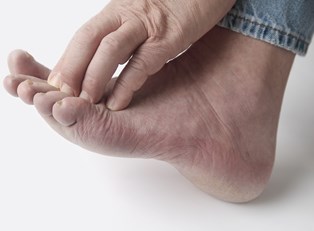Neuropathy occurs when a disruption between peripheral nerves (the parts of the nervous system that are not comprised of the brain and spinal cord) alters the communication from specific body systems. Treatment is largely dependent on the systems affected and the underlying cause of the neuropathy. Since several diseases, like Parkinson’s disease or diabetes, and several hereditary conditions can lead to neuropathy, the cause is also crucial to proper treatment and management of the condition.
The sooner the cause of the neuropathy is nailed down, the more quickly treatment can begin, which results in a much better outlook for the afflicted. Nerves can only regenerate to a certain extent; the longer they are left alone, the less likely they are to do any sort of healing. It is important to note that treatment will not reverse the damage that has been done, but it will at least halt continued damage.
Halting Nerve Damage
Some neuropathies are caused by external factors, like alcohol abuse, vitamin deficiencies, or being subject to damaging toxins. These cases are relatively straight forward: simply removing the toxin or increasing the intake of that particular vitamin can create an amazing change.
Medications may also result in neuropathy; again, simply removing them from the equation allows the nerves to begin to work more efficiently, although they will never be as efficient as they were before the introduction of the wounding substance. When the underlying cause is something like diabetes, properly managing the primary disease can help. The damage to nerves occurs when sugar levels get too high, thus proper diet, exercise, and medication is often a successful course of treatment.
Physical Therapy
Physical therapy is very successful for people with nerves so damaged they have trouble using them. These physician-monitored exercises are appropriate for the level of strength and movement the patient is capable of, and patients are often provided with a series of “work outs” to do at home daily. It is important to follow the physical therapist’s advice correctly, as too much may over stimulate the area and cause more damage, while too little will not do enough to make the muscles strong and able again. When nerve compression or injury is the cause of the neuropathy, and physical therapy fails, surgery may be necessary.
Medication
Nonsteroidal anti-inflammatory drugs may be helpful as an over-the-counter option for managing the pain caused by neuropathy. In some instances, the pain is so severe that muscle relaxants or opiates may be required, although doctors prefer not to prescribe these until it is strictly necessary, as these medications can quickly become addictive.
Gabapentin and pregabalin anti-seizure medications intended for epilepsy are also sometimes used for numbing the nerve endings, thus making the pain less extreme. Unfortunately, these have side effects as well, in the form of dizziness or drowsiness. Some patients often say these make them feel zombie-like as well.
Tricyclic antidepressants increase serotonin and norepinephrine, thereby decreasing pain. Capsaicin, the spicy part of peppers, has also been found to help when mixed into a cream and rubbed directly on the skin. Some people, however, find the burning sensation too intense.
Type-Specific Treatments
Depending on the type of neuropathy that has developed, other specific treatments may be effective. Transcutaneous electrical nerve stimulation (TENS) is similar to electroshock therapy, but mild. Small electrodes are attached to the body for thirty minutes every day for a month, and light electric currents are administered in varying degrees.
Plasma exchange and intravenous immune globulin injections can also help by suppressing the immune system. During a plasma exchange, the patient’s blood is taken out, the antibodies and proteins are removed, and then the blood is reinserted. Immunoglobulins are proteins that are injected into the body. The effects last for about six weeks, and then must be re-administered. Patients are often able to learn how to do this at home.



